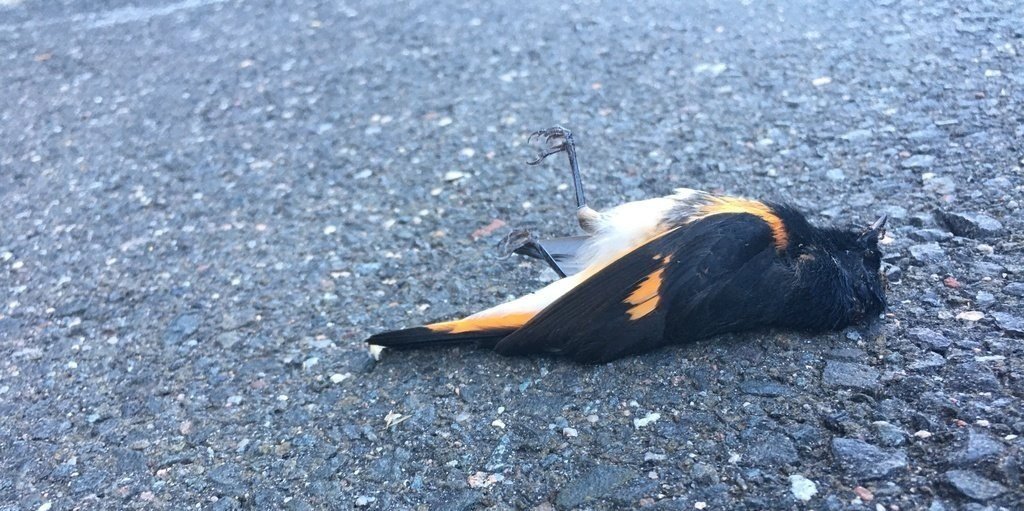
Our Work
Up to one billion birds are killed by window collisions each year in North America, making buildings among the leading human-caused drivers of wild bird mortality. Launched in spring 2022, the Yale Bird-Friendly Building Initiative aims to accelerate the adoption of bird-friendly design on Yale’s campus and beyond. The Initiative is a collaboration of the Law, Environment & Animals at Yale Law School, the Yale Peabody Museum of Natural History, the Yale Office of Sustainability, and American Bird Conservancy.
With the support of seed grants from the Yale University Planetary Solutions Project, we are conducting two research projects in 2022-2024. Our first project focuses on monitoring bird strikes on Yale’s campus and developing a data-driven action plan to significantly reduce bird-window collisions at Yale. Our second project focuses on researching the impacts of existing bird-friendly building policies and developing new public policy proposals at the city, state, and national levels to accelerate the adoption and development of bird-friendly building design and materials.
Project 1: Mitigating Bird-Window Collisions on Yale’s Campus
Birds killed by building collisions at the Yale School of Management during the fall 2019 season. These birds, which were collected by the building’s facilities staff, are now part of the Yale Peabody Museum’s Ornithology Collection. Each carcass is overlaid on a building map indicating the exact position of the collision.
The Initiative’s first research project is focused on monitoring bird-window collisions on Yale’s campus and developing a proposal informed by these data to significantly reduce bird mortality due to Yale buildings. Currently, hundreds, and perhaps thousands, of birds are killed by window collisions every year on our campus. At a single Yale building where bird strikes were monitored periodically from April 2018 to April 2022, more than 400 birds of more than 50 species were killed or injured due to window-strikes. By identifying problematic facades, retrofitting existing buildings that are dangerous for birds, and requiring that new buildings follow rigorous bird-friendly standards, the University has the opportunity to save countless wild birds and to become a model for how institutions can support wildlife-friendly design.
This project will:
collect data on bird-window collisions on Yale’s campus and in the city of New Haven through carcass surveys conducted during the migration seasons, citizen science incidental reports, and historic data from the Peabody Museum’s collection,
identify the Yale buildings and facades that are killing high numbers of birds,
identify available mitigation solutions for those buildings, and
propose updated institutional design standards to prevent unnecessary bird deaths at future Yale buildings. (These institutional design standards will be published in a public format to make it easy for other universities and institutions to adopt them.)
With more than 21 million square feet of building space spread out across more than 520 buildings, Yale has the opportunity to save thousands of birds from unnecessary deaths on our campus. In addition to contributing to the growing body of data on bird-window collisions, this project’s public report will provide a comprehensive, practical, and evidence-based blueprint for mitigation actions that Yale can take to prevent unnecessary bird deaths on campus going forward.
A white-breasted nuthatch window strike victim.
A common yellowthroat, a small migratory songbird, killed by a building collision on campus.
A ruby-throated hummingbird, stunned and injured.
Project 2: Public Policies to Accelerate the Development and Adoption of Bird-Friendly Design
Our second research project, conducted in partnership with American Bird Conservancy’s Glass Collisions Campaign experts, focuses on identifying and evaluating city, state, and federal policies and strategies that can accelerate the adoption of bird-safe building design at scale beyond Yale’s campus. Over the past two decades, more than a dozen cities and towns across America – most notably New York City – have adopted bird-friendly design requirements, usually by modifying building or zoning codes for certain types of new buildings. Legislation aimed at reducing bird mortality due to buildings has also been proposed at the state and federal levels. These efforts are significant, but remain limited in reach and rarely apply to pre-existing buildings. This project will:
research and analyze the effectiveness and impacts of existing bird-friendly policies, and
research and propose new policy strategies to accelerate the development and adoption of bird-friendly technologies for both new and existing buildings.
The resulting report will be published as a public resource for the public, advocates, and policymakers.
UPDATE 8/14/2023: Our report, “Building Safer Cities for Birds,” has been published! The report is available for download here. Read more about the report on Yale Law School’s website here.
Ruby-throated hummingbirds are frequent victims of window collisions.




